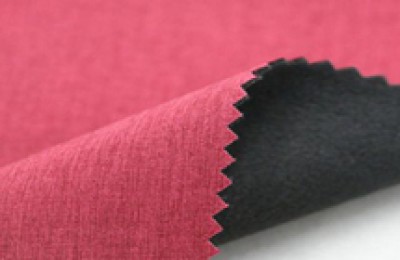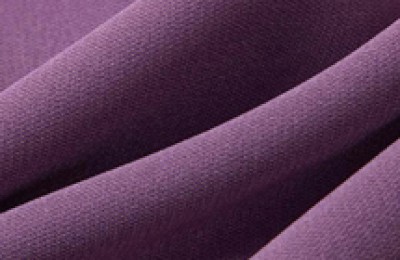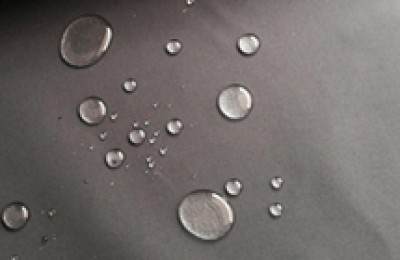Recently, fabric companies are facing severe challenges.
The prices of upstream raw materials continue to rise, and the prices of viscose fiber, polyester yarn, spandex, nylon, dyes, etc. have all increased significantly. Among them, the price of 40D spandex has risen to over 70,000 yuan/ton, an increase of 86% since the beginning of this year, and an increase of more than 150% compared with the same period last year.
However, fabric prices are falling. According to China Customs HS 8-digit code statistics, from January to May, the average export unit price of my country’s eight major categories of printing and dyeing products was US$0.98/meter, a year-on-year decrease of 0.53%. Compared with the same period in 2019, its average export unit price growth rate was -4.81%.
With price increases on one end and price cuts on the other, how fabric companies “survive in the cracks” has become a big test that they must face now.
It is difficult for fabric factories to achieve price transmission
Recently, the price of textile raw materials has been raised several times. In addition to the rising prices of raw materials such as spandex, the price of polyester filament has also begun to fall first and then rise. Relevant platform monitoring shows that recently, the mainstream negotiated price in the POY150D product market is 7,850 yuan/ton, a month-on-month increase of 325 yuan/ton; the FDY150D price is 8,025 yuan/ton, a month-on-month increase of 250 yuan/ton; the DTY150D price is 9,200 yuan/ton, a month-on-month increase. Increased by 400 yuan/ton.
Faced with the fierce price increase of raw materials, fabric companies have issued very few price increase letters. The relevant person in charge of the Suzhou Shengze Silk and Chemical Fiber Index Monitoring and Release Platform pointed out that although the price increase of raw materials after the Spring Festival has recently occurred, there are still a few fabric companies in the market that have raised prices.
The China Keqiao Textile Index released on July 19 also shows that the price index of clothing fabrics has fallen slightly recently. The transaction prices of pure cotton, polyester, polyester-cotton, polyester-nylon, polyester-span, viscose, nylon, and linen fabrics fell in varying amounts, affecting the overall price index of clothing fabrics to decline.
“It is difficult for prices to rise because customers do not accept it.” Li Changchun, manager of Suzhou Wujiang Weihua Textile Co., Ltd., revealed that the company’s current number of orders is basically the same as before the epidemic, but its profits have increased significantly. decline, “We used to be too lazy to do orders that made only a dime, but now everyone is rushing to do orders that only make a few cents.”
Yang Jiandong, general manager of Haimen Youyuan Textile Co., Ltd., also said helplessly Said: “Although the orders are not small, it is getting harder and harder to make money. Since the second half of last year, cotton prices have begun to rise rapidly, and yarn prices have also risen. Taking the gray fabrics we produce as an example, the current cost has generally increased by 20% ~30%.”
“You cannot adjust prices casually, otherwise the negotiation will collapse if the negotiation fails.” This has become the consensus of many interviewed fabric companies, especially the heads of small and medium-sized enterprises. In this “beating the drum and spreading flowers” type of price increase started by the upstream, fabric companies are helplessly digesting more rising cost pressure.
The wave of price increases affects the entire industry chain
It cannot be denied that although some fabric companies are in an embarrassing situation – they are clearly losing money on orders, but they still have to continue Orders. A person in charge of a fabric company who did not want to be named told reporters: “This is mainly to dilute the early fixed costs and retain workers.” He said that it is difficult to recruit workers now, and if the company shuts down, the company will have to spend money. If more funds are used to subsidize workers’ wages, the losses will be even greater. The person in charge said frankly: “In order to prevent the factory’s equipment from being idle too much, companies have to bite the bullet even if they lose a lot of orders. Only if the capacity utilization rate reaches 70% to 80% can companies cut off some of the companies that are losing too much.” Orders.”
Yang Jiandong believes that fabric companies will inevitably be affected by the soaring prices of textile raw materials. The pressure of rising prices for cotton, cotton yarn, polyester-cotton yarn, etc. will eventually need to be shared by multiple parties including fabric companies and clothing buyers. It cannot be solved by a significant price increase in one link alone. All parties need to make concessions.
Faced with this wave of heated price increases, fabric companies are not the only ones feeling anxious.
A technical director of a clothing brand in Shenzhen, who did not want to be named, told reporters that the wave of price increases this year has had a relatively large impact on the company. “It is unknown whether the cost superposition can be passed on to consumers and how much consumers can absorb. The method we are taking now is to join forces with other clothing brands to centralize and aggregate their materials for purchase. Through a large amount of material preparation, Negotiate prices with fabric manufacturers to reduce costs.” He predicted that this round of raw material price increases should see a correction in the second half of this year, and prices should drop by then. But he also pointed out that even if the price of raw materials does drop, it will be difficult for fabric companies to change immediately. “After all, the ‘blood loss’ in the first half of the year needs to be compensated.”
This is indeed a problem that many fabric companies are worried about: in the first half of the year, the operations of fabric companies have been greatly affected. Next, if If the price of raw materials cannot return to normal prices in time, it will inevitably bring huge challenges to the operations of fabric companies throughout the year.
Enterprises took measures to resist the pressure
Although the textile industry experienced “uneven hot and cold” due to the price increase in the first half of the year, fabric companies even became more successful. Although the market has been “frightened”, this round of price increases has also given rise to a positive side.
At the review meeting of the 2021 China Fashion Fabric Design Competition held recently, Dong Mingtai, Evely’s e-commerce purchasing manager, was delighted to find that the participating fabrics this year were better than previous ones in terms of pattern design and raw material application. There are some improvements. “The proportion of environmentally friendly and sustainable fabrics participating in the evaluation is�Increasing, these fabrics greatly reduce the emission of waste gas, waste water, etc., and can ensure a soft and skin-friendly wearing experience, meeting the needs of natural and comfortable dressing, which coincides with the company’s philosophy. ” He said that Eveli adheres to the concept of environmental protection, and now eco-friendly fabrics account for more than 30% of the company’s total purchased fabrics.
“The first highlight of this competition is sustainability. From the competition Among the participating fabrics, it can be seen that many fabric companies have already taken certain social responsibilities and are committed to researching sustainable fabric design. The second highlight is that fabric companies have responded quickly to changes in consumer shopping habits amid the epidemic. Whether it is outdoor-oriented fabrics or fabrics with a soft feel, these are some good attempts. ” Lu Jia, head of fashion apparel at Alibaba’s Tmall Business Department, said that green concepts such as environmental protection and health have long become a trend in clothing consumption. Nowadays, as the culture and education system they accept have gradually improved and matured, they are more interested in environmental protection concepts. The understanding is also more in-depth and diversified. “People are willing to pay for environmental protection, and green and natural fabrics can better guide consumers’ purchasing decisions. ”
Obviously, in the face of the rising prices of raw materials, many fabric companies have not just waited for death. Instead, they have tried their best to resist cost pressures through hard work and process improvements.
“The ‘pain’ caused by the price increase will inevitably cause an increase in the operating costs of fabric companies in a short period of time. Enterprises need to weaken the disadvantages brought by price increases to the operational level through multi-dimensional and multi-path Influence. “Chen Baojian, chief engineer of the National Textile Product Development Center, pointed out that in this case, the most powerful measure for the company at the moment is to take both internal and external measures: internally, through process improvements, continuous refinement and refinement will be more material-saving, energy-saving, and cost-effective. consumption; externally, a mechanism to jointly resist and share risks should be formed in the upper, middle and lower reaches of the industrial chain.
Chen Baojian also suggested that fabric companies should pay attention to changes in raw material prices at any time. When raw material prices are low, they can make appropriate adjustments. We need to purchase more goods for storage. During the off-season, production plans can be reduced in a timely manner based on market demand. “Many companies in Keqiao have already taken this measure. Although it may not be able to completely hedge the impact, it will be mitigated. ”</p






